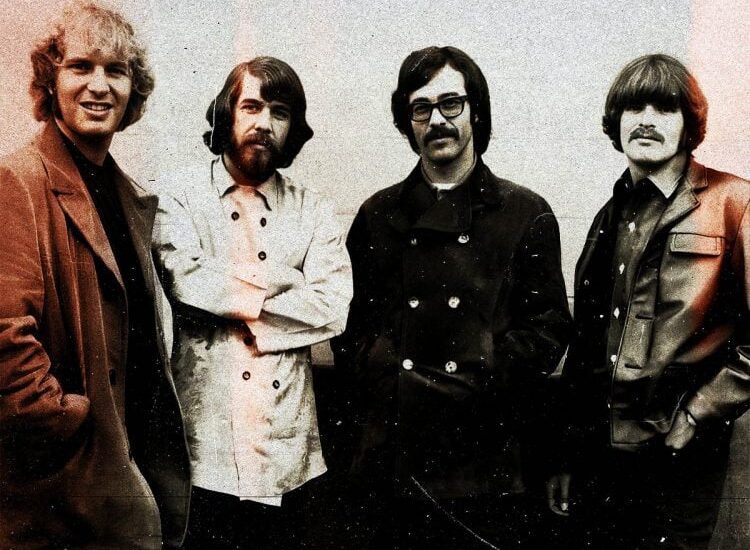
Just In:Suzie Q’: how Creedence Clearwater Revival rallied against “very boring” bands…..
When Creedence Clearwater Revival (CCR) burst onto the music scene in the late 1960s and early 1970s, they did so with a distinctive sound that would go on to influence generations of musicians and fans. At a time when psychedelic rock, experimental music, and elaborate stage shows were all the rage, CCR’s no-nonsense approach to music stood out like a beacon of authenticity. The band’s straightforward, roots-driven sound and direct lyrical style were a direct response to the more self-indulgent, experimental nature of many contemporary acts. In interviews and public statements, members of CCR often criticized what they saw as the pretentiousness and excesses of the so-called “hippie bands” of the era, which they found to be “very boring.”
CCR’s defiance against these trends was not just a matter of personal preference—it was deeply embedded in their musical philosophy. The band believed in the power of simplicity, rawness, and authenticity, all of which they felt were lacking in the psychedelic rock scene. They preferred to keep things stripped down and relatable, focusing on clear melodies and tight rhythms rather than lengthy, self-indulgent solos or esoteric lyrics. For them, rock and roll was about communication and connection, not abstract experimentation. This philosophy, though somewhat controversial at the time, resonated with millions of listeners around the world and helped solidify their place in rock history.
The Rise of Creedence Clearwater Revival
Formed in 1959 as The Blue Velvets in El Cerrito, California, CCR consisted of John Fogerty (lead vocals, guitar), his brother Tom Fogerty (rhythm guitar), Stu Cook (bass), and Doug Clifford (drums). Over the years, the band refined their sound, which blended elements of swamp rock, blues, country, and southern rock. By 1967, they had become Creedence Clearwater Revival and quickly rose to prominence, signing with Fantasy Records. Their breakthrough came with the release of their debut album, Creedence Clearwater Revival (1968), which included the hit single “Suzie Q.”
“Suzie Q,” a cover of a blues standard written by Dale Hawkins, was an unlikely hit. At a time when elaborate, experimental rock was dominating the charts, CCR’s straightforward, gritty rendition of the song stood out. It was raw, driving, and full of energy—nothing like the flowery, psychedelic music that was coming out of San Francisco and other counterculture hotspots. It’s important to note that “Suzie Q” was not just a tribute to the blues but a reflection of the band’s musical ethos: keep it simple, keep it real.
The Battle Against “Boring” Bands
In interviews, particularly during the band’s heyday in the late 1960s and early 1970s, John Fogerty was outspoken about his disdain for bands that he felt were losing sight of the core principles of rock music. He believed that many of the acts rising to fame at the time were more concerned with self-indulgent experimentation than with making music that resonated with listeners on a visceral level. Bands like the Grateful Dead, Jefferson Airplane, and others from the San Francisco scene were often criticized for their long, meandering jams, abstract lyrics, and overall sense of pretension.
Fogerty, in particular, was vocal about the excesses of the “hippie” movement and the psychedelic scene that defined the late 60s. He dismissed long jams and solos that seemed to have no real structure or meaning. To him, this kind of music was overly complicated and ultimately disconnected from the average listener. “What you need is a good rhythm and a catchy melody,” he once said, emphasizing that rock music should be fun, energetic, and, most importantly, accessible.
CCR’s own music, on the other hand, was stripped down, tight, and direct. Fogerty’s guitar playing was simple but effective, driving the band’s songs forward with power and precision. The rhythm section, consisting of Doug Clifford’s drums and Stu Cook’s bass, was solid and unflashy, grounding the band’s sound in a way that made it universally appealing. Their songs were short, often clocking in at just a few minutes, and they didn’t overstay their welcome with unnecessary embellishments.
While some saw CCR as a throwback to earlier forms of rock and roll, the band’s music was also forward-thinking in its own way. Fogerty’s lyrics often touched on themes of social and political unrest, and his songs painted vivid pictures of small-town America and the struggles of everyday people. It was a stark contrast to the self-reflective, inward-looking lyrics that were common in the psychedelic rock genre at the time. Songs like “Fortunate Son,” which critiqued class inequality and the Vietnam War, and “Bad Moon Rising,” with its apocalyptic tone, demonstrated that the band wasn’t afraid to tackle big issues, but they did so with a clear, direct approach.
You may also like
Archives
Categories
- ABA
- Actor
- Actress
- Actress and singer
- Band
- Baseball
- Basketball
- Boxer
- Broadcasting corporation
- CCR
- cricketer
- Cyclists
- Dart
- Drummer
- Fictional character
- Football game
- Formula 1
- Golf
- Guitarist and songwriter
- Guitarists
- Gymnastics
- Hockey
- Ice hockey
- Marathon
- MLB
- Motocross
- MotoGP
- Motorcross
- Musician
- Musician and drummer
- NFL
- NHL
- NRL
- Racer
- Red bull Racing
- Rider
- Rock band
- Rugby league
- Simone Biles
- Singer and songwriter
- Songwriter and musician
- Sport commentator
- Tennis
- Texas longhorns
- Track and field athlete
- Uncategorized
Leave a Reply